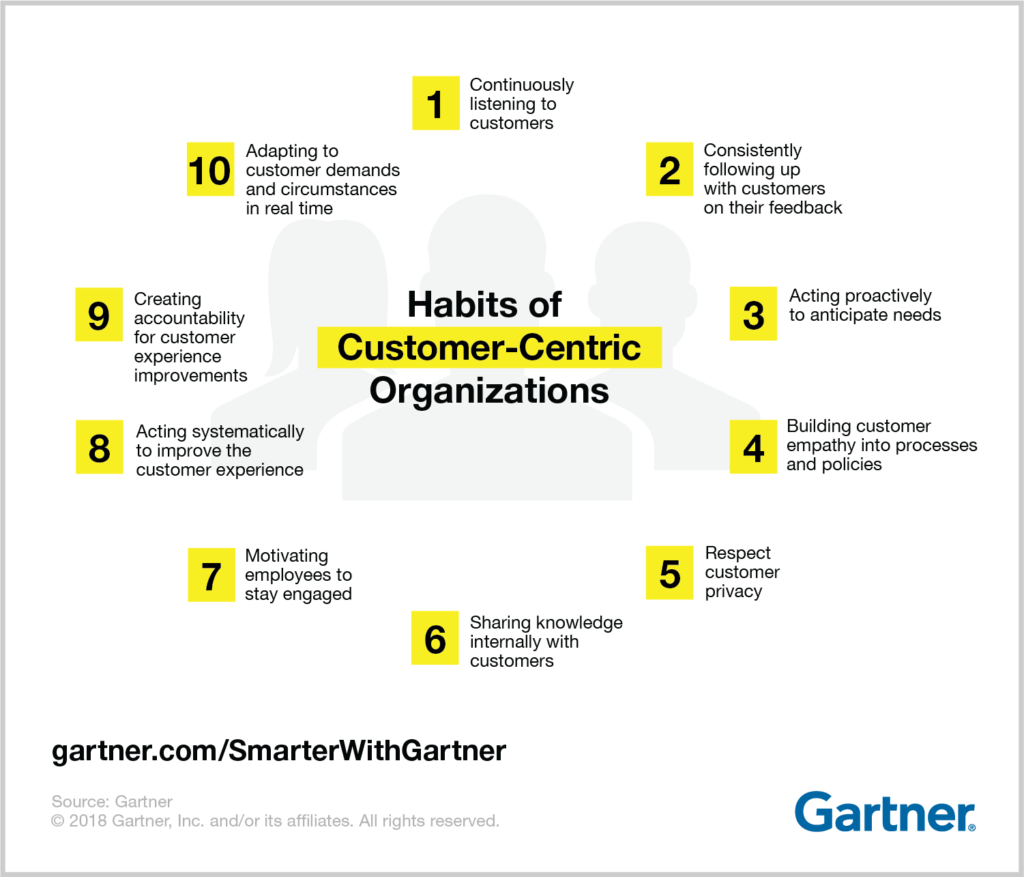What You Should Learn From Apple’s Marketing Strategy

Technology behemoth Apple is known for innovation, user-friendliness, design excellence, and customer-centricity. Whether you buy an iPhone or a MacBook, Apple products have a special way of resonating with the desires of consumers. Their global success comes down to one simple factor: Apple’s marketing strategy. What does Apple do differently from other brands? What can we learn from the Apple marketing mix? In this blog, we answer these questions by dissecting key observations of how Apple continues to inspire an emotional response from customers with each new product that enters the market.
The Secret Behind Apple’s Success
By bringing sleek, clean, and stylish beauty to the most mundane products, Apple is undoubtedly one of the most influential brands in the world. No matter how the world changes, Apple has managed to command a certain appeal that eventually turned into their key USP. Of course, many consumers would argue that the best devices being manufactured by Samsung or Huawei are equally good, or even better. But, hardly anyone would turn down the chance of owning an Apple product.
It is important to realize that the emotional response the company invokes among users is a byproduct of planning, evaluating, and optimizing strategies to suit the changing preferences in the market. Most consumers of Apple products express their relationship with the brand by being reciprocal, which shows a strong commitment to the value they offer end users.
So, how does Apple manage to satisfy customers across the world, even as their demands grow? Let’s delve deeper into the crux of Apple’s advertising and marketing brilliance, something every company can learn from.
5 Things to Learn from Apple’s Marketing strategy
Every company has a unique PR approach, but what makes Apple’s marketing strategy a case study for other brands is its commitment to encouraging advocacy. Let’s take a look at the five areas of excellence in Apple’s marketing strategy that have worked wonders for the technology giant, and inspired loyalty among consumers.
1. Customer-centric genius
Founded by everybody’s favorite Steve Jobs, it’s only right that Apple shared the same genius as his vision that changed the world. Apple has always been about the users.
Their focus on delivering cutting-edge technology paired with design brilliance comes from putting the customer’s needs first. To do this, product innovation is mostly led by designers who create user-centric design, rather than building technology first and then designing. This places customer-centricity and ease of use as the focal points of Apple’s advertising strategy.

Apple knows customers will not be satisfied for long, so they release improved versions of their devices with new features that feed the wants of their existing customers. Most often, customers don’t even know they want these new features until a version is released in the market. The product design is lustrous, because style, elegance, and in-vogue colors are everybody’s favorite. The ability to look well, be innovative, and honor customer desires is at the core of Apple’s marketing strategy.
A case of this example is when Apple got rid of the home button on the iPhone years ago. This was a shockingly accurate depiction of the customer sentiment, which made something so useful better by removing it. Another example is when Apple’s dual and triple cameras came out in the iPhone 11. While other brands build similar technology, Apple remains at the top of customer-centricity, because they leave people expecting the next big thing.
2. Brand advocacy
Influencer marketing may seem like a new thing, but Apple’s been doing it for decades. Apple knows the value of turning consumers into brand advocates. The company believes that the most valuable influencers are the users of Apple products. They’ve managed to own the technology market by turning customers into raving fans who tell their sisters, brothers, cousins, neighbors, and even mail staff about Apple. How do they do this?

Unlike many other technology brands, Apple is not purely transactional. They don’t want a customer to buy once and disappear. Apple’s marketing strategy is built on the principle of making the brand more powerful through a great user experience, making users come back for more.
When a customer promotes Apple products to their family, the brand gains credibility. This can only happen if the customers feel valued. By presenting a human feel through design, Apple eliminates the pay-to-say strategy common in influencer marketing. This creates a clear distinction between people-centricity and celebrity hype. The secret to Apple’s marketing strategy is to project colorful life experiences through its loyal customer base.
3. Real connections
Apple’s Instagram feed has a descriptive bio that says, “Everyone has a story to tell.”
It’s a tagline that can instantly strike a chord with the readers. User-generated imagery and video are always a hot topic at Apple. An example is the user-generated campaign #ShotoniPhone that creates a real connection with users.

While many of the top-performing posts are by professional photographers with a large follower base, you can find a healthy saturation of enthusiasts and amateurs who are sharing their stories. When real people share their experiences with a product, it moves from brand-speak to authentic storytelling.
Artistic, thoughtful, and engaging, Apple surpasses the obvious promotional advantage when it comes to making videos and photos personal. They create a feedback mechanism that shows who the customer is, and what they stand for.
Apple’s marketing strategy revolved around the company’s pivotal focus: what matters to you matters to Apple. Their Instagram page is the easiest example, transcending traditional brand-centric messaging to reach priceless consumer-centric experiences that speak for themselves.
4. Fostering aspirational lifestyles
Apple knows people are adamant about forming identities. The company realizes that lifestyle is a core aspect of product innovation. Much like bringing water to a hot desert, Apple brings an aspirational lifestyle to its users. Its products embody the aspirations, interests, and motivations of its beloved customers. This helps separate an Apple product from the competition in the market.
Apple represents the color of life through its creative ads. By representing the values, emotions, and identities of their users, Apple’s marketing gives people pleasure in eccentricity. Instead of telling the customer how to feel, Apple responds to the customer’s aspirational lifestyle demands.
Hence, Apple has gained a vast share of the luxury or high-end brand space. For this reason, people find worth in spending more on Apple products, such as Apple Watch or AirPods, which symbolize an aspirational lifestyle.
People love to feel wealthy, and an Apple product undoubtedly raises the standard of your aspirations through its design. People find that Apple’s marketing strategy is a reflection of human endeavor, which encourages brand loyalty. That’s how the brand continues to inspire simplicity and sophistication at the same time.
5. Brand equity driving demand
Apple is known for many things, but one of the most important lessons to learn from it is the recognition of branding power. Brand awareness generated by Apple is aimed at profitability by being the main preference of users. How do they achieve this?
We know Apple has a strong brand position in the market, and a powerful brand image. This wasn’t an accident, but a reaction of the market to their innovative design. Apple believes in perpetually delighting customers who long for something special.

As competition rises in the market, Apple knows that making people feel valued and important is the main objective. They tailor products to match the trust and excitement consumers want. For example, when Apple decided to introduce new colors to its range of iPhones, it wasn’t simply a response to the crowded smartphone market. It was a conscious decision to conceptualize the smartphone experience through in-vogue colors, hand-picked to mimic the persona of their ideal buyer. By creating brand equity with the consumer at the center, Apple has found a way to let its products do the talking.
Learning from what Apple does on the world stage can help your brand exercise meaningful ways to relate with consumers and retain their loyalty. As technology advances, we realize how important user-centric marketing really is, and Apple is the world’s most powerful example of delivering customer-centric experiences, high-value branding, and creative ideation.
Greatness starts with a thoughtful strategy to change the world, by delivering experience and not just goods. It’s a continuous effort, but the secret to getting ahead is getting started. As Steve Jobs rightly said, “That’s what makes great products. It’s not process—it’s content.”
FAQs
Consistency, aesthetic integrity, metaphor, and user control are just a few of Apple’s design principles. If you want to know more, you can read their detailed brand guidelines that are available online.
A few lessons to learn from Apple’s marketing strategy are as follows:
– Customer-centricity
– Brand advocacy
– Powerful storytelling
– Delivering high-end experiences
Apple is perhaps best known for its #ShotoniPhone campaign.
Latest Blogs
Explore how Google’s 2025 AI search updates triggered ranking chaos. Learn actionable strategies to adapt your SEO for AI Overviews, zero-click searches, and SERP volatility. Stay ahead now.
Learn how to rank on AI search engines like ChatGPT, Perplexity, and Gemini by optimizing your content for authority, structure, and relevance. Stay ahead in AI-driven search with this strategic guide.
Explore the best healthcare SEO services for your medical practice. Improve online visibility and effectively reach more patients in need of your services.
Get your hands on the latest news!
Similar Posts

Content Marketing
5 mins read
Top 10 Financial Marketing Agencies to Help Your Business Succeed

Content Creation
5 mins read
AI for Marketers Unlocking Smarter Strategies for Content Creation

Content Marketing Strategy
6 mins read